Since we have been going through hardware STH saw at Intel Vision 2022, we have another GPU version, the Intel Arctic Sound-M. This is Intel’s data center GPU designed for VDI, video streaming/ transcoding, and AI inferencing. There are actually two models, and we spotted both at the event.
Intel Arctic Sound-M from Intel Vision 2022
The Intel Arctic Sound-M is called the company’s Data Center GPU, even though there is the higher-end Intel Ponte Vecchio GPU Packages at Vision 2022. These are instead lower-power GPUs designed to fit in normal PCIe slots within servers.

One of the units we saw seemed to have a fancy face plate, but it also looks like it was de-populated of many components. An example is the power connector here. One can see the space for the power connector, but also the two screw holes in the heatsink that is for a server mounting bracket.
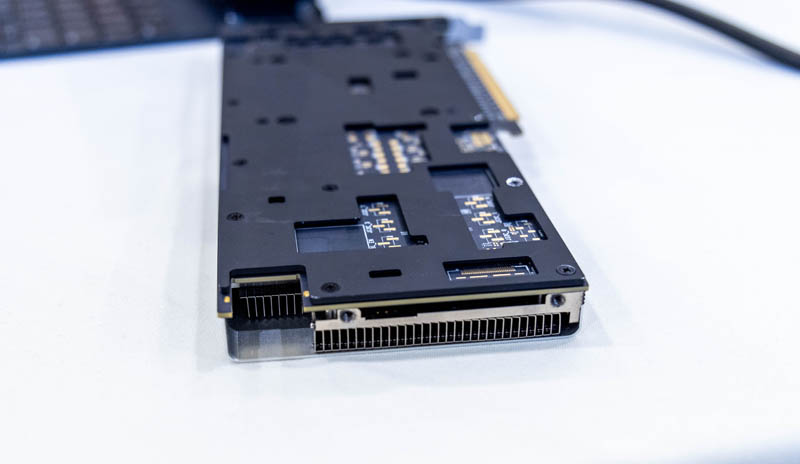
The rear had a back place, but it also looks like many components are missing.
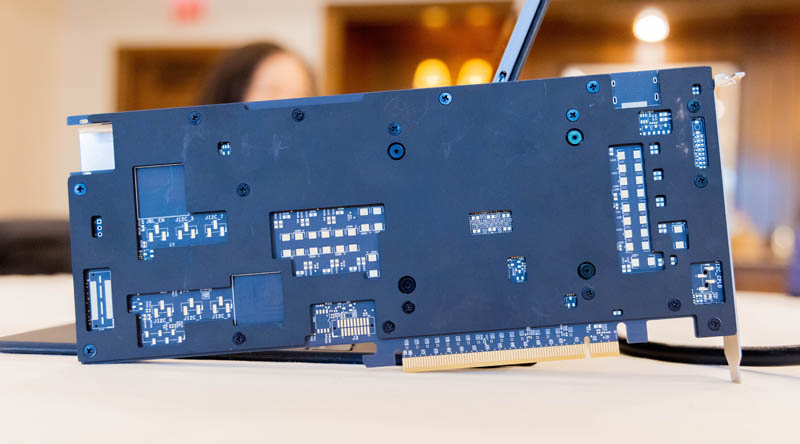
We also saw the Intel Arctic Sound Accelerator (ATS-M) on the floor, albeit with a less extreme branding effort.
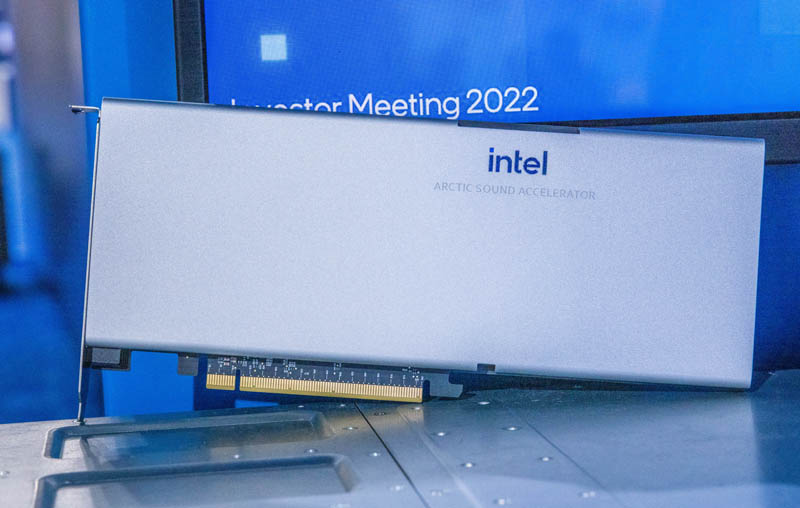
This unit had that 8-pin power connector populated.
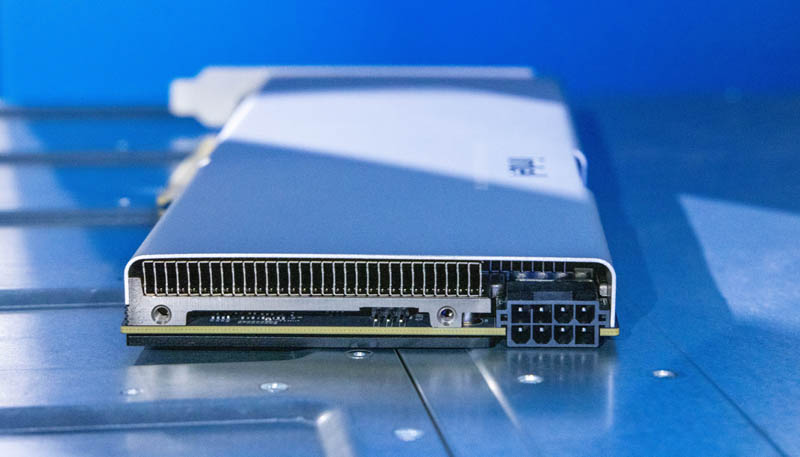
One really interesting feature is that there is a noticeable and not an attractive notch on the top of the unit. Intel did not confirm this, but our sense is that this is going to be for a multi-GPU link card that will come out in the future.
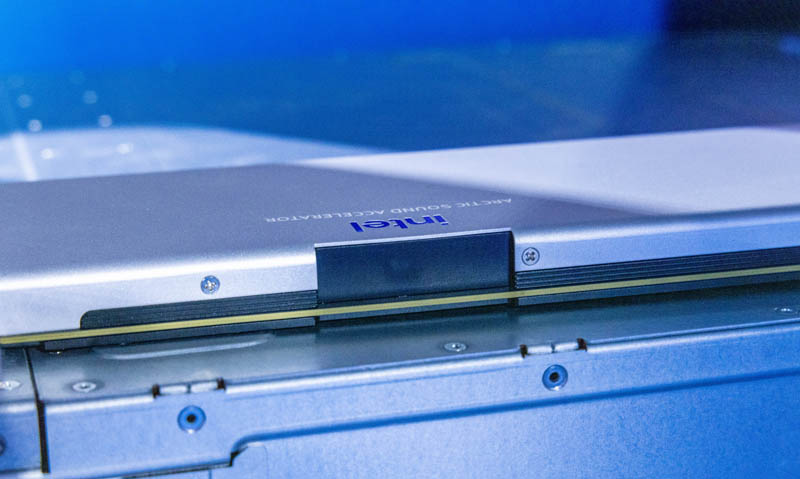
The full-height card is the more powerful of the two with 32 compute units, but there is another low-profile model with two 8 compute unit GPUs onboard. The reason for this card is not really for the GPU compute, but instead to get a higher density and lower-power media engine solution.
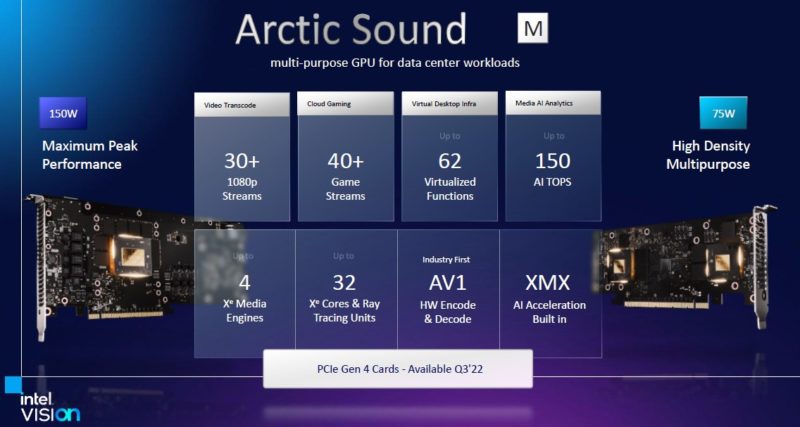
One of the biggest features of the new GPUs is that Intel has AV1 encode/ decode onboard, as with its desktop Arc GPUs. Here the focus is more on the accelerator versus the normal GPU compute elements.
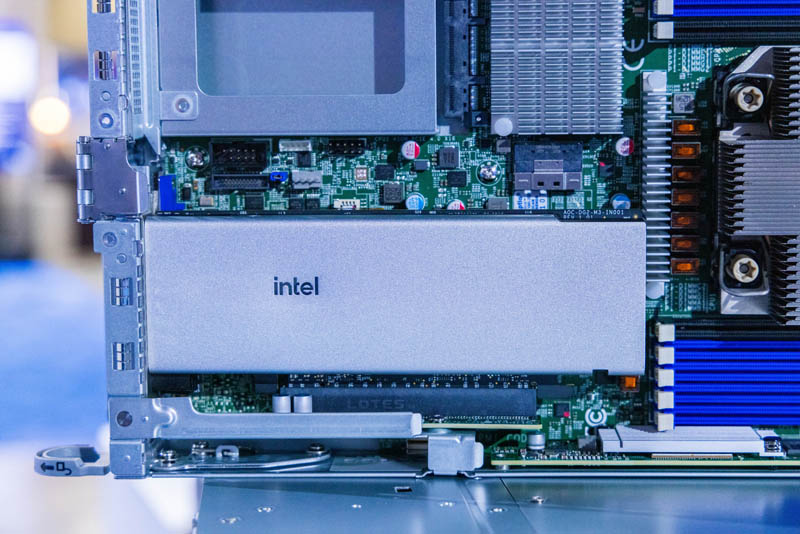
The low-profile, dual GPU card fits into a 75W envelope (the full height is 150W) and thus can be placed in many dense servers. Here is an example of the unit in a Supermicro BigTwin. If you want to learn more about the BigTwin, check out our Supermicro BigTwin Intel Xeon Ice Lake Edition 2U4N Hands-on.
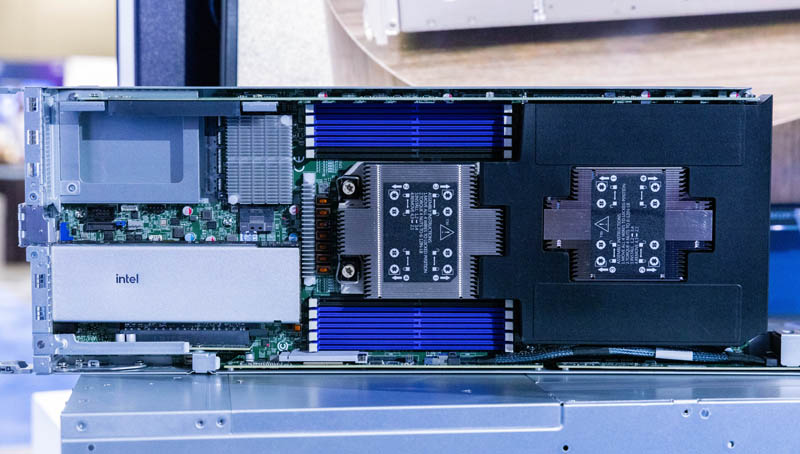
Many in the industry are focused on gaming or the HPC supercomputer space. Intel, however, is pushing ATS-M as a strong alternative to many of NVIDIA’s lower-end GPUs as an easier way to add acceleration to servers.
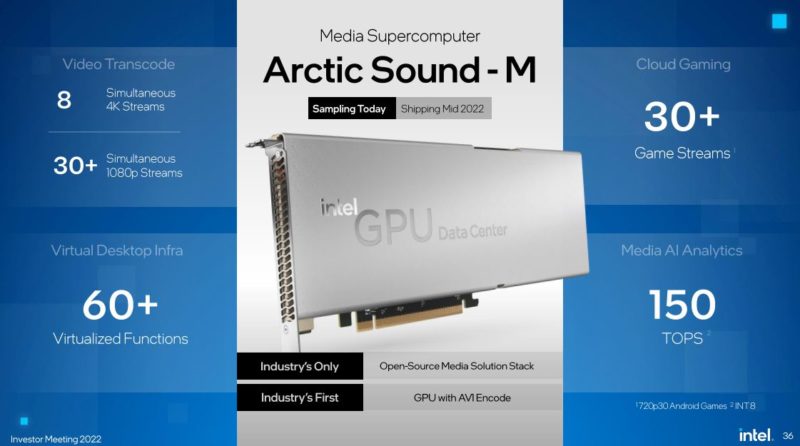
These new GPUs have virtual functions for VDI, the encoding, and with the AI inference capabilities of the GPU plus the video codecs, this can be a low-power video inference solution that is popular in applications like retail analytics.
Final Words
There was one item that really stuck out talking to the Intel teams at Vision 2022, especially on the GPU side. While the folks running network solutions, Xeons, and so forth were talking about deriving more revenue from solutions and selling software, the GPU was almost the opposite. On the GPU side, Intel is not planning to charge for VDI capabilities as an example. The company is going directly after NVIDIA and doing so specifically with the goal of providing lower-cost solutions to gain market share.
Hopefully we can bring STH readers a demo of something with ATS-M this summer as the cards come out.

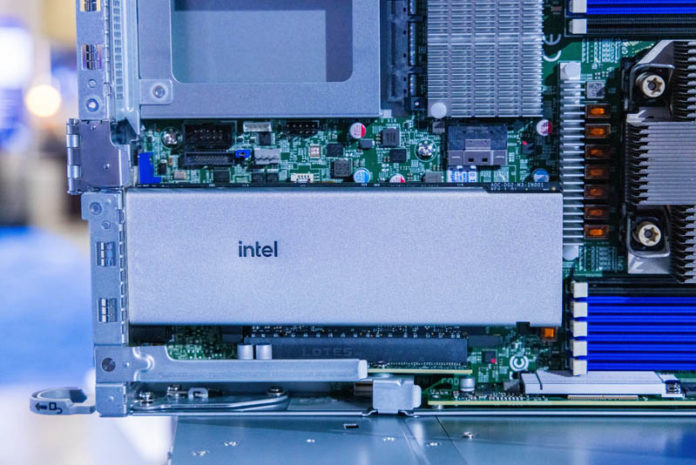



These are almost certainly hand built prototypes, not series production models. It would be extremely rare to see Gold plated ENIG PCBs in production models. There are usually only OSP PCBs, even the 3090ti, A100, H100 are.
Is Intel purposely ignoring AMD or completely ignorant of their competitor’s products?
Good luck going after Nvidia with a lower-cost solution when Intel discovers AMD’s lineup.
I noticed a Supermicro ad, “Supermicro announces first servers featuring Intel Arctic Sound-M datacentre GPUs”, on club386. It states that Intel’s “Project Endgame” will be based on the VDI capabilities of these Arctic Sound-M cards, and that Supermicro will be shipping in July, 2022.
Looks like these will be used to stream GPU gaming services, as well as AI and media processing services.
where do you buy these?